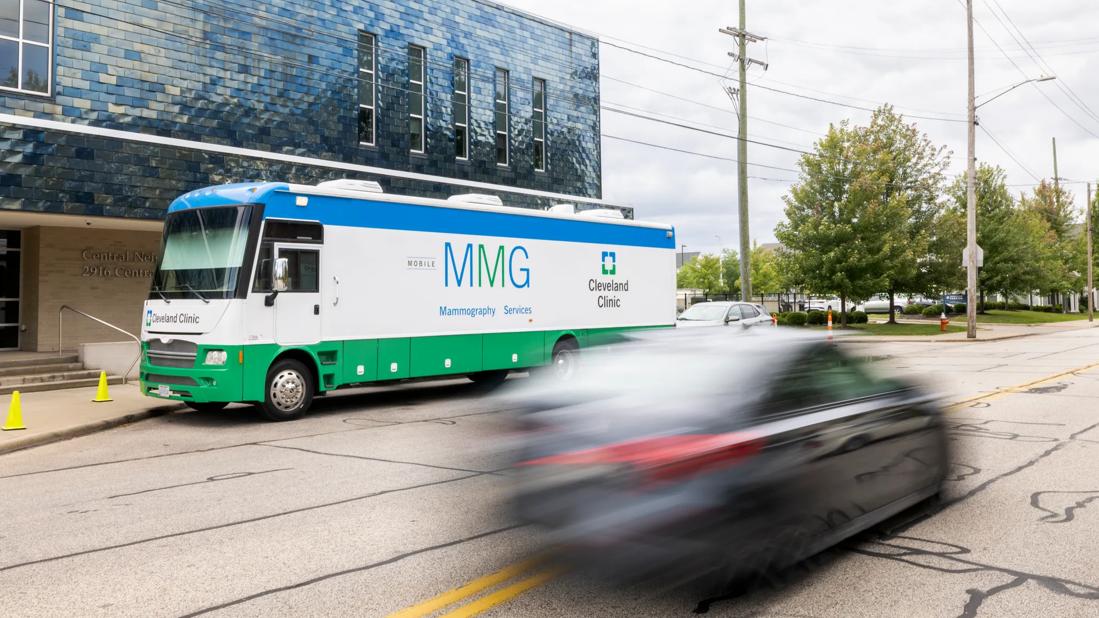Early interventions, improved screening access and tailored support services can help patients navigate cancer care

As of January 2020, there were 580,466 people across the U.S. experiencing homelessness, with more than 50 percent of individuals lacking any shelter at all. People facing these circumstances are more likely to pass away from cancer compared to those with stable housing.
Advertisement
Cleveland Clinic is a non-profit academic medical center. Advertising on our site helps support our mission. We do not endorse non-Cleveland Clinic products or services. Policy
Radiation oncologists are one group of physicians who can help reduce barriers to care for these patients, according a recent editorial by a team of Cleveland Clinic researchers. For many patients with cancer, radiation therapy will play a role in their treatment course. Prolonged treatment courses are one of the barriers to care people experiencing homelessness face, and hypofractionated radiation therapy is an option to reduce the number of treatments and therefore trips needed. This is one of the approaches for improving cancer outcomes highlighted in the article.
“No one should have to face cancer treatments while living on the street or in a shelter,” says Cleveland Clinic Chief Resident and lead author Zachary S. Mayo, MD. Yet it’s often difficult to know how best to tackle this multi-factorial problem. The researchers are seeking to better understand how best to support patients with cancer who are also struggling with a lack of housing.
One crucial step to improving health outcomes is to break down common misconceptions and stigmas about people who are experiencing homelessness. “We’d all like to think we’re immune to homelessness, but anyone is vulnerable to losing their job through no fault of their own due to the economy or a sudden illness or accident,” says Radiation Oncology Resident Physician and senior author Sarah S. Kilic, MD. “This is one of the most common reasons for homelessness. A person becomes unable to work, loses their housing and the situation spirals from there.”
Advertisement
The researchers looked at many factors influencing care of patients experiencing homelessness, and noted the severe impact that preconceived notions can have in care delivery. One common myth is that people who are homeless may be more aggressive, despite research showing that they are more likely to be victims of violence than perpetrators.
Numerous studies highlight stigma and discrimination as major problems that the homeless population faces within healthcare systems. There are also documented misconceptions in the medical community around the ability of people experiencing homelessness to adhere to treatment plans. “These misconceptions affect interactions and the care given to patients, creating a cycle that further inhibits the ability to get the care they need,” says Dr. Kilic. “Meeting patients where they are and helping them in the ways they need to be helped can be very different and highly impactful for a patient experiencing homelessness.”
“People who are homeless face tremendous structural barriers to healthcare access,” Dr. Mayo explains. “Financial and transportation issues, along with reduced rates of insurance coverage, lead to difficulties obtaining care. These patients may also have more pressing issues, such as food insecurity. There may be underlying physical or mental health issues on top of that, making navigating a complex health system especially trying.”
Despite these profound obstacles to care, there is a dearth of research into cancer care and screening for the homeless population, says Cleveland Clinic Director of Breast Radiation Oncology and co-author Chirag Shah, MD. “Clinical care must focus on holistic solutions. This involves providing patients with a consistent point of contact, and addressing concerns beyond their medical condition, such as housing, transportation, availability of healthy food, childcare and missed wages.”
Advertisement
Current healthcare delivery systems are typically not well designed to deliver care to patients experiencing homelessness. The researchers’ hope is that bringing these issues to light will encourage providers to consider each patient’s specific needs and obstacles when making treatment decisions.
Beyond personalized treatment options, there are several steps health systems can take to overcome barriers to care, such as:
At Cleveland Clinic’s Taussig Cancer Institute, patients experiencing homelessness receive additional support from a social work team and a financial navigator to connect them with resources such as housing assistance, van service to/from treatments and nutritional support. The nursing team is also there for patients through their many weeks of treatments, addressing side effects as well as the mental and physical toll that homelessness takes.
Beyond these practical steps, it is also the way care is delivered that matters. One study noted that many people experiencing homelessness expressed the value they placed on having rapport and trusting relationships within healthcare. The HOPE research study is one example of fostering these relationships. Through the study, Cleveland Clinic offers patient support and mobile mammograms at local homeless and day shelters as well as community organizations, educating women about breast health and introducing them to the medical system in general so all their healthcare needs can be addressed. Through this work, the researchers are seeking to better understand how to improve mammography screening among women experiencing homelessness.
Advertisement
Advertisement

An update on the technology from the busiest Gamma Knife center in the Americas

Percutaneous stabilization can increase mobility without disrupting cancer treatment

New guidelines update recommendations

Simple score uses clinical factors to identify patients who might benefit from earlier screening

A multi-pronged strategy for tackling cancer access problems

Approximately 500 million people globally are experiencing 'period poverty'

Use of GLP-1s and improving cardiovascular health lowers risk of hematologic malignancies

Lutheran Hospital team brings emerging treatments to community setting